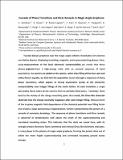| dc.contributor.author | Zondiner, U | |
| dc.contributor.author | Rozen, A | |
| dc.contributor.author | Rodan Legrain, Daniel | |
| dc.contributor.author | Cao, Y | |
| dc.contributor.author | Queiroz, R | |
| dc.contributor.author | Taniguchi, T | |
| dc.contributor.author | Watanabe, K | |
| dc.contributor.author | Oreg, Y | |
| dc.contributor.author | von Oppen, F | |
| dc.contributor.author | Stern, Ady | |
| dc.contributor.author | Berg, E | |
| dc.contributor.author | Jarillo-Herrero, Pablo | |
| dc.contributor.author | Ilani, S | |
| dc.date.accessioned | 2022-08-02T19:29:56Z | |
| dc.date.available | 2021-09-20T18:22:32Z | |
| dc.date.available | 2022-08-02T19:29:56Z | |
| dc.date.issued | 2020 | |
| dc.identifier.uri | https://hdl.handle.net/1721.1/132465.2 | |
| dc.description.abstract | © 2020, The Author(s), under exclusive licence to Springer Nature Limited. Twisted bilayer graphene near the magic angle1–4 exhibits rich electron-correlation physics, displaying insulating3–6, magnetic7,8 and superconducting phases4–6. The electronic bands of this system were predicted1,2 to narrow markedly9,10 near the magic angle, leading to a variety of possible symmetry-breaking ground states11–17. Here, using measurements of the local electronic compressibility, we show that these correlated phases originate from a high-energy state with an unusual sequence of band population. As carriers are added to the system, the four electronic ‘flavours’, which correspond to the spin and valley degrees of freedom, are not filled equally. Rather, they are populated through a sequence of sharp phase transitions, which appear as strong asymmetric jumps of the electronic compressibility near integer fillings of the moiré lattice. At each transition, a single spin/valley flavour takes all the carriers from its partially filled peers, ‘resetting’ them to the vicinity of the charge neutrality point. As a result, the Dirac-like character observed near charge neutrality reappears after each integer filling. Measurement of the in-plane magnetic field dependence of the chemical potential near filling factor one reveals a large spontaneous magnetization, further substantiating this picture of a cascade of symmetry breaking. The sequence of phase transitions and Dirac revivals is observed at temperatures well above the onset of the superconducting and correlated insulating states. This indicates that the state that we report here, with its strongly broken electronic flavour symmetry and revived Dirac-like electronic character, is important in the physics of magic-angle graphene, forming the parent state out of which the more fragile superconducting and correlated insulating ground states emerge. | en_US |
| dc.language.iso | en | |
| dc.publisher | Springer Science and Business Media LLC | en_US |
| dc.relation.isversionof | 10.1038/S41586-020-2373-Y | en_US |
| dc.rights | Creative Commons Attribution-Noncommercial-Share Alike | en_US |
| dc.rights.uri | http://creativecommons.org/licenses/by-nc-sa/4.0/ | en_US |
| dc.source | arXiv | en_US |
| dc.title | Cascade of phase transitions and Dirac revivals in magic-angle graphene | en_US |
| dc.type | Article | en_US |
| dc.contributor.department | Massachusetts Institute of Technology. Department of Physics | en_US |
| dc.relation.journal | Nature | en_US |
| dc.eprint.version | Original manuscript | en_US |
| dc.type.uri | http://purl.org/eprint/type/JournalArticle | en_US |
| eprint.status | http://purl.org/eprint/status/NonPeerReviewed | en_US |
| dc.date.updated | 2020-10-29T15:10:45Z | |
| dspace.orderedauthors | Zondiner, U; Rozen, A; Rodan-Legrain, D; Cao, Y; Queiroz, R; Taniguchi, T; Watanabe, K; Oreg, Y; von Oppen, F; Stern, A; Berg, E; Jarillo-Herrero, P; Ilani, S | en_US |
| dspace.date.submission | 2020-10-29T15:10:54Z | |
| mit.journal.volume | 582 | en_US |
| mit.journal.issue | 7811 | en_US |
| mit.license | OPEN_ACCESS_POLICY | |
| mit.metadata.status | Publication Information Needed | en_US |
